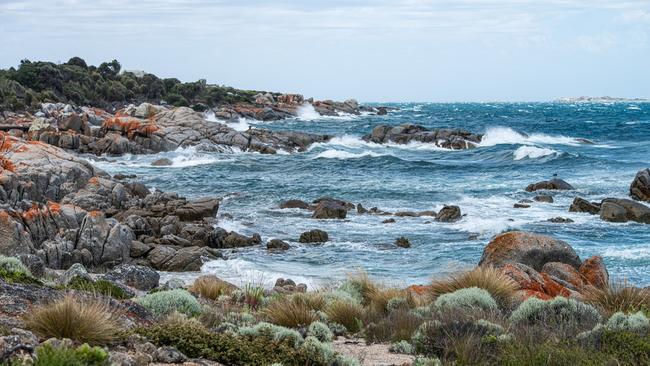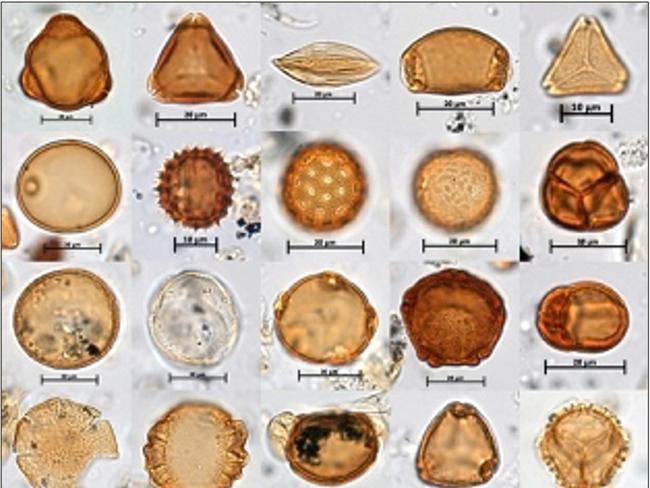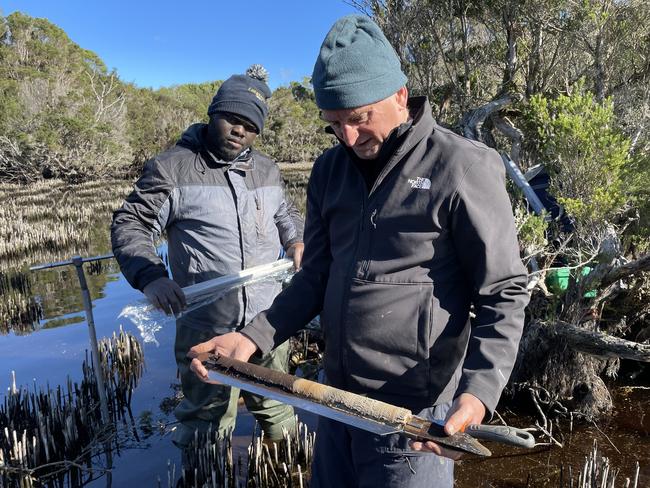Ancient mud affirms longstanding theories on cultural burning in Tasmania during the holocene
Groundbreaking results of a new study have been deemed the “earliest and most detailed” records of the Tasmanian landscape being manipulated by Palawa for more than 40,000 years

Tasmania
Don't miss out on the headlines from Tasmania. Followed categories will be added to My News.
Tasmania has been cultivated with fire for thousands of years longer than previously thought, in an “affirmation” Indigenous cultural burning practices.
When a wildfire tore through 98 per cent of Lungtalanana, a Palawa managed island, they wanted to know whether that had happened before or whether it was caused by changes in land management due to colonisation.
Researchers from the Australian National University and Cambridge University were invited to help find answers and the recently published results “surprised” them.

Lead author and palaeoecologist at the ANU Professor Haberle said the Tasmanian Aboriginal Centre invited the researchers to study ancient mud core samples from Clarke Island (Lungtalanana).
Lungtalanana is an Tasmanian Aboriginal managed island in the Bass Strait, lying below Cape Barron Island which made up part of the Bassian Plain- the land bridge connecting Australia and Tasmania in the past at times of low sea levels.
The results found the first Tasmanian Aboriginal people (Palawa) arrived more than 41,600 years ago, almost 2,000 years earlier than previously documented.

Pollen and carbon records show the Palawa were managing forests and grasslands using fire to foster the type of vegetation or landscape that was important to them since arrival.
Researchers believe these are the earliest and most detailed records of humans using fire in the Tasmanian landscape.
Professor Haberle said the results were an affirmation of what the Palawa “have known all along” that they had used fire to manipulate the landscape since “time immemorial”.

He said the results provide evidence to give Aboriginal people a “seat at the table” in discussions on how to best manage the landscape in the future.
“It signifies that the landscapes we live in today are a legacy of that very long custodianship from Aboriginal people,” Professor Haberle said.
“Many of the changes we see in the environment whether it be climate change or the removal of cultural burning tradition on land, these changes are causing quite dramatic impacts on the modern day landscape.”
The research team analysed traces of charcoal and pollen from a site that had almost 4 metres worth of sediment to study, which is quite rare according to Professor Haberle who said usually sites contain sediment dating back 1,000- 10,000 years ago, not 50,000 like this sample.





